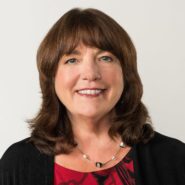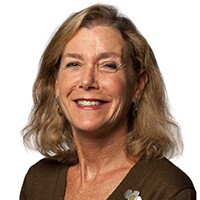The value of unpaid family care is huge. Although policy change is underway, more robust action is needed to support caregiving families.
Source: Family Caregiving Report Highlights Need for Collective Action
The aging of the population and its impact on families have implications for all sectors of our nation and can no longer be viewed as a private, family-only issue.
That takeaway comes out loud and clear in our newly released update of the Valuing the Invaluable series. More than ever, the 2019 report reveals that addressing the everyday realities of family caregiving—a term that refers to providing care for an adult family member or close friend with a chronic, disabling, or serious health condition—is a fundamental challenge for the nation.
Value Measured in Hundreds of Billions
Our new report finds that about 41 million family caregivers in the U.S. provided an estimated 34 billion hours of care to an adult with limitations in daily activities in 2017. The estimated economic value of their unpaid contributions was approximately $470 billion. By comparison, all out-of-pocket spending on U.S. health care in 2017 was only $366 billion.
Such numbers underscore the vital role family caregivers play in the delivery and coordination of health care and long-term services and supports (LTSS) in the U.S. Imagine what would happen if family caregivers, most of whom also hold down jobs, were no longer available to provide care. The economic costs—in health care, LTSS, and in workplaces—would increase astronomically.
The New, Emerging Family Caregiver Demographic
These realities are particularly relevant today because families and family caregivers are changing. More women, traditionally the family caregivers for older adults, have paid jobs. Men, meanwhile, increasingly take on caregiving duties. Smaller families mean fewer siblings to help share the care. High rates of divorce and smaller family sizes, coupled with more working families, means that in the future, older adults with health and functional needs will have fewer potential family members on whom they can rely for everyday help.
Key trends include the increasing diversity of family caregivers, the greater complexity of care needs, larger numbers of family caregivers balancing paid work and family caregiving, and high out-of-pocket caregiving expenses.
But perhaps above all else, the key mega-trend to understand is this: the availability of family caregivers is unlikely to keep pace with future demand. In just 7 years (2026), baby boomers themselves begin to turn 80 years old—when people are most at risk to need LTSS and receive help from others to carry out tasks of daily living. Meanwhile, the U.S. population aged 45-64 (peak caregiving years) will increase by only 1 percent between 2010 and 2030. During the same period, the 80-plus population will increase by a whopping 79 percent.
Change Underway
Fortunately, since we published the last Valuing the Invaluable Update in 2015, progress has come, although it’s not happening fast enough. Advancements in LTSS, health care, and in workplace policies have all contributed to better support the well-being of caregiving families. On the policy side, a national strategy is on the horizon—under the Recognize, Assist, Include, Support, and Engage (RAISE) Family Caregivers Act to support family caregivers.
In addition, Medicare and Medicaid continue to better identify and support family caregivers. Policy and training initiatives continue to strengthen the capacity of health care and social service providers to recognize and engage family caregivers, and to evolve towards adopting person- and family-centered care as standard practice.
Meanwhile, the vast majority of states have passed the Caregiver Advise, Record, Enable (CARE) Act. The CARE Act calls on hospitals to identify and support family caregivers when their relatives go into the hospital and as they transition home.
Progress also occurred in the assessment of family caregivers’ own needs and preferences in home and community-based services (HCBS) programs. Family caregiver assessments ask questions of the care recipient’s family member about his or her own health and well-being, and any services or supports he or she may need to be better prepared for the caregiving role.
Finally, states are leading the way in adopting paid family leave policies to include family caregiving so that people can keep earning a living while handling caregiving responsibilities. Eight states and the District of Columbia have or will soon have such policies.
Charting a Path Forward
Despite important policy changes since the 2015 report, we need more robust action. This means new policies and programs in both the public and private sectors, educational efforts for providers and families, and a collective priority to change the culture of care in the U.S.

Susan Reinhard, RN, PhD, FAAN, is a senior vice president at AARP, directing its Public Policy Institute, the focal point for AARP’s public policy research and analysis. She also serves as the chief strategist for the Center to Champion Nursing in America, a resource center to ensure the nation has the nurses it needs.

Lynn Friss Feinberg is a senior strategic policy advisor at the AARP Public Policy Institute. Her areas of expertise include family caregiving, long-term care, dementia care, and home care quality.
